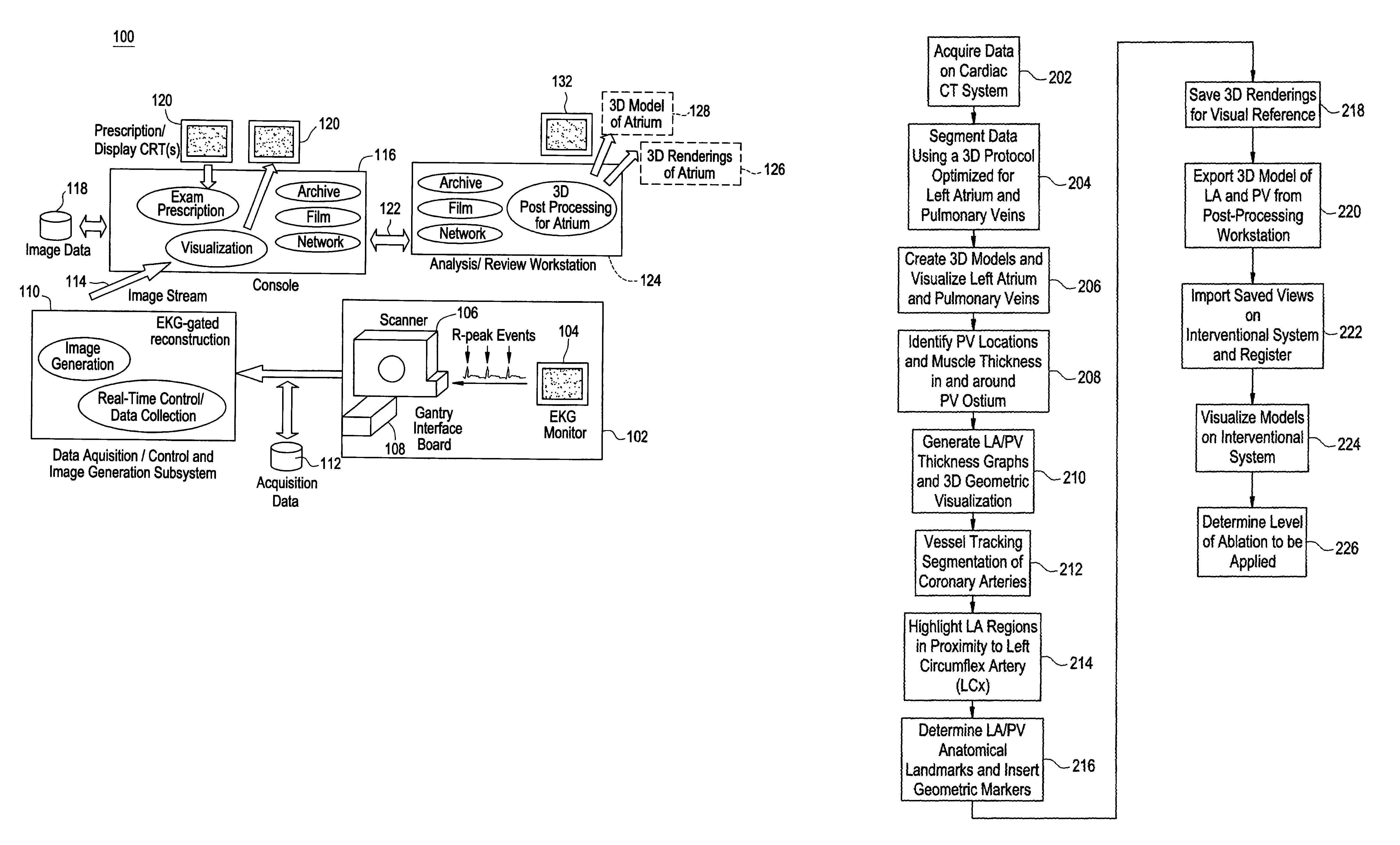Cardiac CT system and method for planning atrial fibrillation intervention
a technology of atrial fibrillation and imaging system, which is applied in the field of cardiac implant systems, can solve the problems of complex 3d geometry of the left atrium and pvs, tissue vaporization and surface charring, and pv stenosis
- Summary
- Abstract
- Description
- Claims
- Application Information
AI Technical Summary
Benefits of technology
Problems solved by technology
Method used
Image
Examples
Embodiment Construction
[0013]Disclosed herein is a cardiac imaging system and method for atrial fibrillation (AF) ablation that provides information for planning interventional procedures that enable an electrophysiologist, cardiologist and / or surgeon to plan in advance a desired approach to take for the procedure. Additionally, with a more detailed three-dimensional (3D) geometrical representation of the left atrium (LA) and pulmonary veins (PV), as may be obtained from imaging modalities such as computed tomography (CT), magnetic resonance (MR) and ultrasound, the practitioner can identify the location and orientation of PVs and muscle thickness in and around the PV ostium, as well as at other strategic locations. The degree and location of applied RF energy may be selected beforehand so as to avoid the problems encountered with ablation procedures, thereby making the procedure more efficacious and reducing the risk of complications such as PV stenosis.
[0014]Although the exemplary embodiments illustrate...
PUM
 Login to View More
Login to View More Abstract
Description
Claims
Application Information
 Login to View More
Login to View More - R&D
- Intellectual Property
- Life Sciences
- Materials
- Tech Scout
- Unparalleled Data Quality
- Higher Quality Content
- 60% Fewer Hallucinations
Browse by: Latest US Patents, China's latest patents, Technical Efficacy Thesaurus, Application Domain, Technology Topic, Popular Technical Reports.
© 2025 PatSnap. All rights reserved.Legal|Privacy policy|Modern Slavery Act Transparency Statement|Sitemap|About US| Contact US: help@patsnap.com



